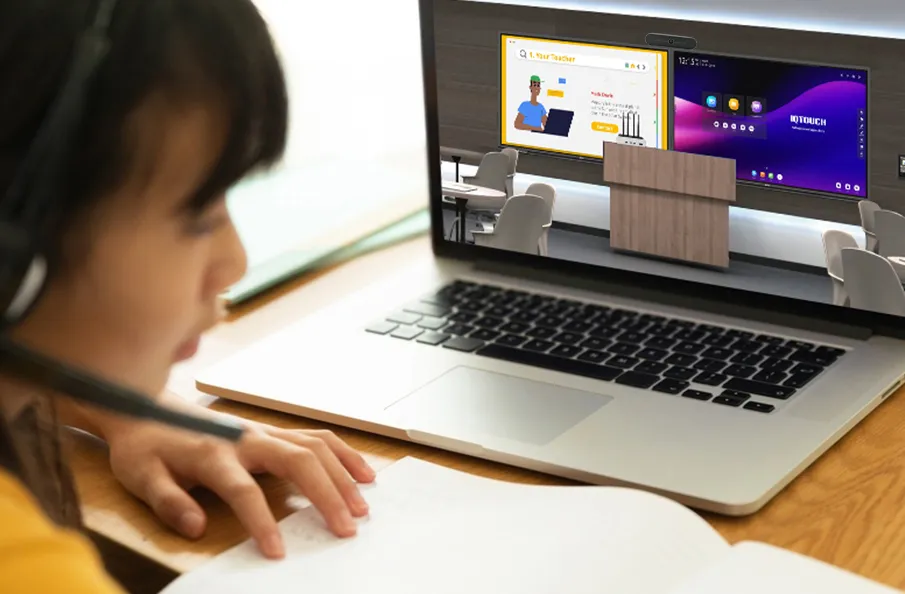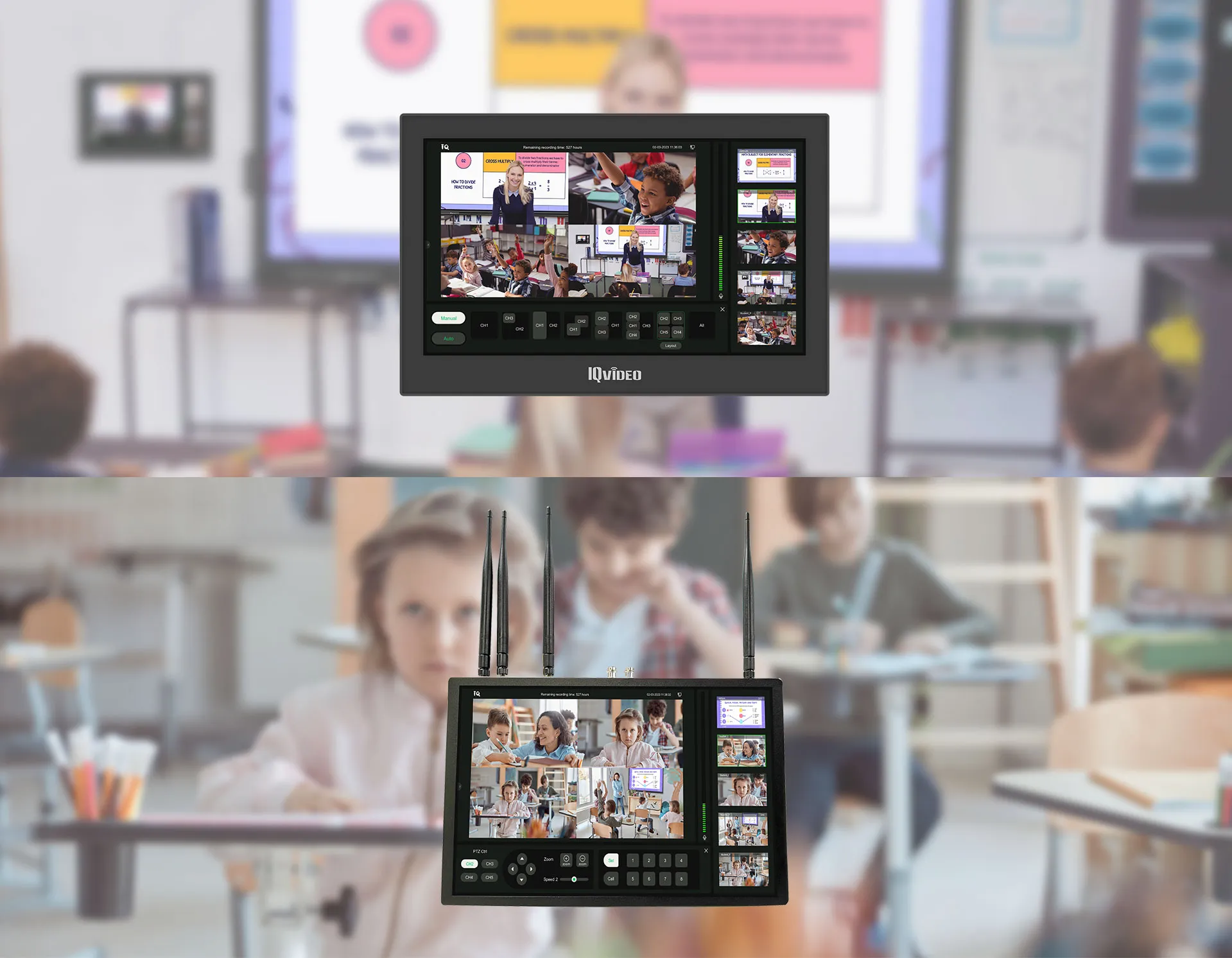Imagine a classroom environment where students can revisit complex concepts, delve deeper into interesting topics, and solidify their understanding of the material – even outside of class hours. This is precisely the power that lecture capture systems bring to the table.
Here we first explain the definition of lecture capture system so that we can keep in same pace.

In essence, a lecture capture system is a technological tool that records and archives classroom lectures. This can encompass audio and video recordings of the instructor's presentation, including slides, screencasts, and even whiteboard notes. These recordings are then made accessible to students through an online platform, allowing them to review the material at their convenience.
The specific setup of a lecture capture system may vary, but generally, it involves installing hardware and software components in the classroom. Cameras capture the instructor and any visual aids used, while microphones record the audio. The software then manages the recording process, encodes the captured content, and allows for easy access and management of the lecture recordings.
Lecture capture systems offer a plethora of advantages for students, fostering a more accessible and personalized learning experience.
Not everyone learns at the same speed. Lecture captures allow students to revisit challenging concepts, rewind confusing parts, and pause to take detailed notes – all at their own preferred pace.
Some students are visual learners who benefit from seeing the instructor's gestures and body language. Others might be auditory learners who prefer to hear the lecture again. Lecture captures cater to these diverse learning styles by providing a multimodal learning experience.
Unexpected situations arise. With lecture captures, missing a class due to illness or other commitments doesn't mean falling behind. Students can access the recording and stay on top of the course material.
Taking notes during a fast-paced lecture can be overwhelming. Lecture captures allow students to focus on grasping the key concepts without frantically jotting down every detail. They can then use the recording to revisit specific points and take more comprehensive notes later.
Lecture captures can be a valuable tool for students with disabilities. Recordings can be transcribed into text for students who have difficulty hearing, or captions can be added to assist students who are deaf or hard of hearing.
Lecture capture systems are not just beneficial for students – they can also significantly enhance the teaching experience for instructors.

Instructors can leverage IQVideo LCS710 lecture capture system to pre-record foundational material. This frees up valuable class time for interactive activities, discussions, and deeper exploration of complex topics – a concept known as the flipped classroom approach.
By pre-recording basic information, instructors can spend less time lecturing and more time facilitating discussions and answering student questions. This fosters a more active and engaging learning environment.
Lecture capture allows instructors to incorporate more active learning strategies into their classes. They can use recordings for review after class sessions, allowing them to dedicate class time to polls, quizzes, group projects, or simulations that reinforce the concepts covered in the pre-recorded lectures. This not only keeps students engaged but also helps them develop critical thinking and problem-solving skills that are crucial for success beyond the classroom.
Lecture capture systems offer a range of benefits that extend far beyond the physical classroom walls:

Lecture recordings create a valuable digital archive of course material. This allows instructors to build a comprehensive library of lectures and resources that can be accessed by current and future students. This is particularly useful for flipped classroom approaches, where students can refer back to pre-recorded lectures as needed.
Lecture capture is a game-changer for remote and hybrid learning environments. Students enrolled online or attending remotely can access class recordings and participate asynchronously. This flexibility caters to diverse learning styles and student needs, fostering a more inclusive learning experience.
Recordings can be shared beyond the classroom, allowing for collaboration with guest speakers or experts who can't be physically present. Additionally, lecture capture can facilitate knowledge sharing between instructors within a department or across institutions.
Lecture captures can simplify administrative tasks for instructors. Recordings can be used to document course content and delivery, which can be helpful for creating course outlines or evaluations.
While lecture capture systems offer a multitude of benefits, there are some factors to consider before implementing them in your classroom:

Lecture capture systems come in various configurations, with features and functionalities catering to different needs and budgets. Consider factors like recording quality, ease of use, scalability, and integration with your existing learning management system (LMS).
Technical compatibility with your classroom setup and user-friendliness for both instructors and students are crucial. Ensure the system integrates seamlessly with your existing audio/visual equipment and offers an intuitive interface for recording, managing, and accessing recordings.
Student privacy concerns around lecture recordings need to be addressed. Develop clear policies regarding recording permissions, access restrictions, and data storage protocols to ensure compliance with relevant regulations and build trust.
Here we list the future trends of the lecture capture system with you.
As technology continues to advance, we can expect to see even more innovative applications of lecture capture system. Artificial intelligence and machine learning will play a crucial role in enhancing the capabilities of this powerful tool.
While lecture capture system offers numerous benefits, it's important to address potential challenges, such as technical difficulties and the need for adequate internet connectivity. By overcoming these obstacles, we can unlock the full potential of lecture capture system and revolutionize the way we teach and learn.
Lecture capture systems have become an integral part of modern education, offering a myriad of benefits that extend beyond the traditional classroom. With careful consideration and implementation, lecture capture systems can significantly empower both educators and students, transforming the way education is delivered and consumed. Click here to learn more about lecture capture system and boost your learning experience.
Is IQVideo compatible with different video conferencing platforms?
Yes, IQVideo integrates seamlessly with popular video conferencing platforms, making it easy to share recorded lectures and live streams.
Can I use IQVideo to create interactive video lectures?
While IQVideo doesn't have built-in interactive features, you can use third-party tools and platforms to add interactive elements to your recorded lectures.
How can I ensure the security of my lecture recordings?
IQVideo employs robust security measures to protect your lecture recordings, including encryption and access controls.
What is the cost of using IQVideo?
The cost of IQVideo varies depending on the specific features and services you need. It's best to contact the IQVideo provider for detailed pricing information.
Can I use IQVideo to create personalized learning experiences?
Yes, IQVideo can be used to create personalized learning experiences by tailoring lectures to the specific needs of individual students or groups of students.
Here are some other articles that we think might interest you:
Revolutionizing 2024's Higher Education: Why IQVideo LCS710 is the Premier Lecture Capture System
4 Latest Trends in Lecture Capture System 2024
Unleashing the Versatility: 5 Dynamic Application Scenarios of IQVideo Lecture Capture System
Copyright © 2017.Returnstar Interactive Technology Group Co., Ltd All rights reserved.
